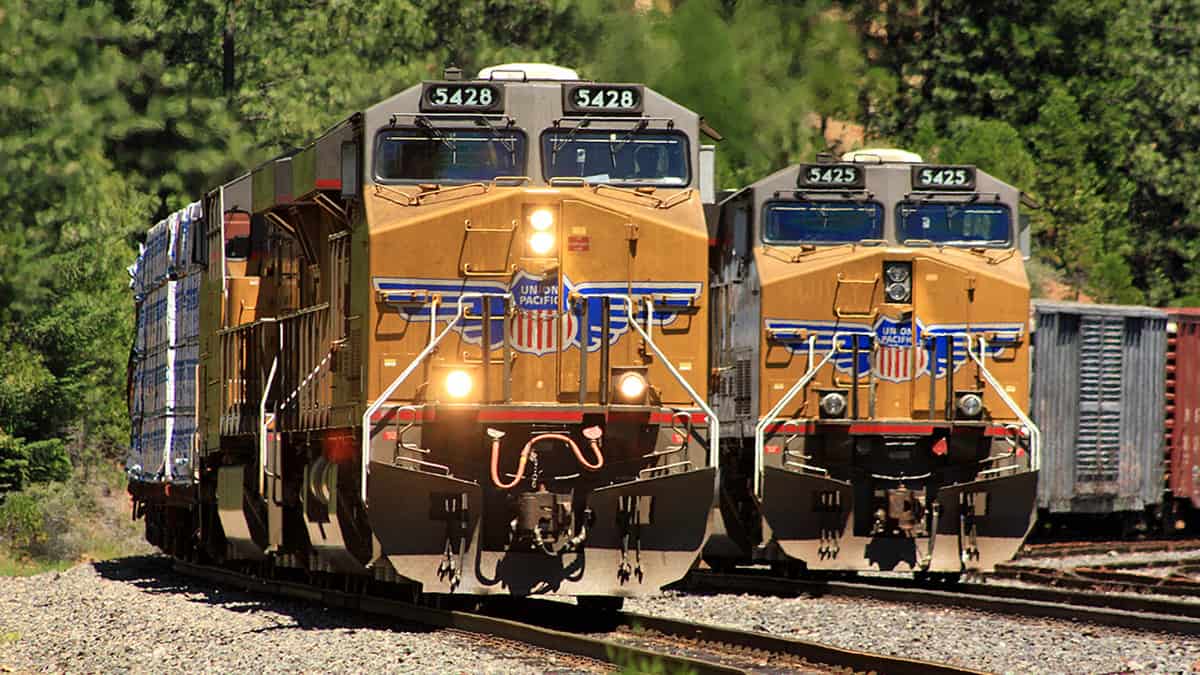U.S. carloads appeared to be moderating their months-long decline in February, with carloads down only 0.8% from a year ago if coal carloads are excluded from the total, the Association of American Railroads (AAR) said yesterday.
February coal carloads tumbled 21.1% year-over-year, AAR said.
Excluding coal and grain carloads, U.S. carloads were flat in February compared with the same period in 2019. They were up 62 carloads year-over-year for the week ending Feb. 29.
But including coal and grain, U.S. carloads in February totaled 927,084 caloads, down 7.3% year-over-year, with the decline “driven almost entirely by coal,” said AAR Senior Vice President John Gray.
“Excluding coal, carloads in February were down just 0.8%, their best showing in a year,” Gray said.
Total February U.S. traffic was 1.92 million carloads and intermodal units, which is 8.1% lower than the same period a year ago.
But 10 out of 20 commodity categories posted year-over-year carloads gains, “the most in more than a year,” Gray said. Among the gains were chemicals, which rose 2.9%; petroleum and petroleum products, which were up 7.2%; and all other carloads, which increased 12%.
Meanwhile, U.S. intermodal units totaled 997,683 containers and trailers, down 8.9% from February 2019.
Gray noted that even though the coronavirus outbreak is creating a lot of uncertainty, its impact on U.S. rail traffic appears limited. However, if the projected sharp declines in U.S. port volumes come to fruition in the weeks ahead, that could impact rail volumes.
“Supply chain disruptions related directly or indirectly to the coronavirus may have played some unquantifiable role in the decline in U.S. intermodal volumes in February, but intermodal has been falling for more than a year,” Gray said. “The headwinds facing railroads that pre-date the virus include lingering trade impacts and economic uncertainty; severe winter weather in parts of the country; blockades in Canada that shut down rail traffic there and impacted domestic traffic too.”
On a year-to-date basis, U.S. traffic year-to-date totaled 4.36 million carloads and intermodal units, down 6.8% year-over-year. Of this, U.S. carloads were down 6.5% to 2.09 million carloads, while intermodal units slipped 7% to 2.24 million containers and trailers.
The uncertainties ahead
Although the drop in U.S. port volumes in the coming weeks could put pressure on intermodal volumes, that pressure could be relatively short lived because China’s ocean cargo volumes are rising to pre-Lunar New Year levels. Cargo volumes and ship calls have swiftly rebounded at Chinese ports, confirming that the cogs of global trade are grinding back into motion, FreightWaves reported on Tuesday.
That said, the U.S. consumers’ response to the coronavirus, coupled with uncertainties over China’s manufacturing output and its subsequent effects on the global supply chain, could serve as potential headwinds for intermodal volumes over the next several months, according to a FreightWaves Passport research note. Another factor that could affect intermodal volumes is the extent that truck rates strengthen this year, FreightWaves market expert Michael Baudendistel said earlier this week.










